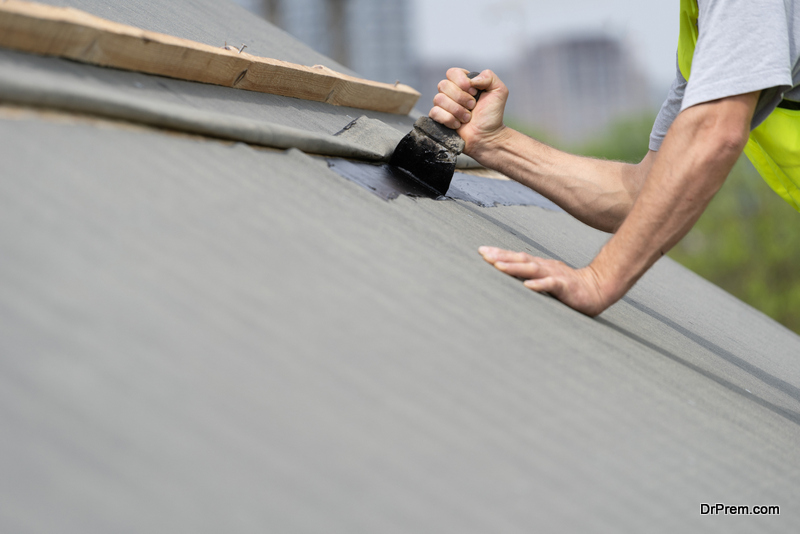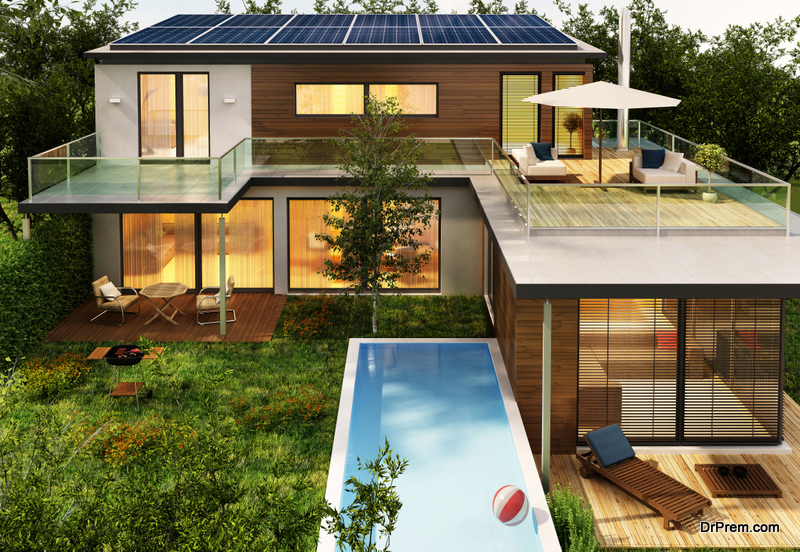When it comes to designing an energy efficient home, few improvements have as much of a positive impact as solar panels. However, there’s a lot that goes into installing solar panels on a residential roof. So before you start installation, make sure you consider the details.
5 Factors to Think AboutBefore Installing Solar Panels
Just three years after the industry completed its 1 millionth installation – a feat that took four decades to accomplish – the U.S. now has more than 2 million homes that are powered by solar panels. That number is again expected to double – this time by 2023.
If you’re interested in becoming part of this energy-conscious movement, here are some things you’ll have to take into consideration:
1. Roof Condition
 How old is your roof? And is it in good condition?
How old is your roof? And is it in good condition?
If you know you’ll need a new roof within the next couple of years, now’s not the best time to install solar panels. (A roof replacement requires all panels to be dismantled and installed again.) Ideally, you want to install solar panels after replacing your roof.
It’s also smart to think about the warranty of your roof versus the warranty of the solar panels. It’s best if they align closely together. This simply reduces the cost and challenges of maintenance.
2. Roof Orientation and Slope
In addition to the roof age and condition, think about its orientation and slope. Every home has a unique roof, but there are some factors you should be on the lookout for.
In terms of orientation, it’s ideal to have solar panels on a south-facing roof. East- and west-facing roofs significantly limit the amount of energy your solar panels can produce. North-facing windows can work, but will require some careful installation to optimize efficiency.
It’s also important to think about the purpose of the roof and how it directs water into specific gutters. Consider whether different aspects of the solar system – such as wire harnesses and racking – will divert water in an unwanted direction.
3. Energy Consumption
 Your home’s energy usage will dictate how many solar panels you need in your system. You can calculate your home’s energy consumption by studying a 12-month sample of your electricity usage. This will help you develop an average of your needs so that you can install a system that’s as efficient as possible.
Your home’s energy usage will dictate how many solar panels you need in your system. You can calculate your home’s energy consumption by studying a 12-month sample of your electricity usage. This will help you develop an average of your needs so that you can install a system that’s as efficient as possible.
As a very broad general rule of thumb, the average home in the U.S. needs roughly 9,000 kilowatt-hours of electricity per calendar year. In order to harvest this much energy, a home needs 21 320-watt solar panels. This provides a total installation size of roughly 6.72 kilowatts.
4. Local Building Codes and Restrictions
There will come a day when solar shingles and other products will make it easy to enjoy solar power without having large, visible panels installed on a roof. However, that day is not today. Unfortunately, this means the installation of solar panels often leads to discussions and disagreements in neighborhoods with homeowners associations (HOAs).
If there are restrictive covenants or HOA rules in place that prevent your right to install solar panels, you’ll have to lobby for the opportunity. Come up with a plan and lead your pitch with the benefits of the system.
5. Financing and Rebate Options
 Depending on the size of your home and the type of lot/roof orientation you have, installing a solar panel system could get expensive. Thankfully there are some different incentives, rebates, and financing options to help lessen the burden.
Depending on the size of your home and the type of lot/roof orientation you have, installing a solar panel system could get expensive. Thankfully there are some different incentives, rebates, and financing options to help lessen the burden.
While the price of solar has dropped dramatically, many homeowners find they still need help to justify the cost. The biggest federal tax credit – the Solar Investment Tax Credit – compensates homeowners 26 percent of the cost of installing a system in the form of a tax credit. This allows the average homeowner to save nearly $9,000. Some states have additional credits and rebates to further offset the cost.
Finally, you’ll find financing options for solar that can break the remaining cost up into smaller monthly portions that spread out over a number of years.
Putting it All Together
Solar makes sense for most homeowners, but it’s not something that you should invest in without first performing adequate due diligence. Take your time and weigh each of these factors into your decision.
Article Submitted By Community Writer




